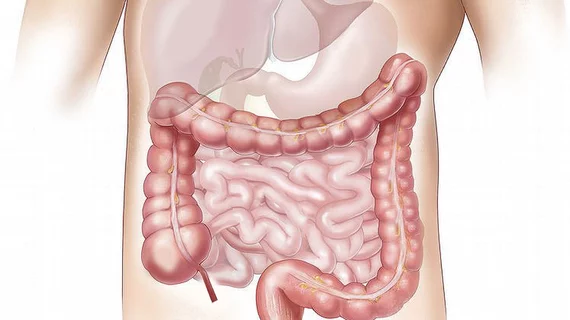Aided by AI, alternative imaging finds colorectal cancer at 100% clip
CT colonography’s uphill climb may only get steeper, as researchers have achieved 100% accuracy identifying cancers below the surface of colorectal tissue by combining optical coherence tomography with deep learning.
While the piloted technique would require a piggyback from a colonoscope for tissue collection, its apparent added benefit could justify its use versus the noninvasive appeal of CT colonography, aka “virtual colonoscopy.”
The combined imaging/AI method, called PR-OCT for pattern-recognition optical coherence tomography, was developed at Washington University in St. Louis and is described in a study running online in Theranostics.
Senior author Quing Zhu, PhD, and colleagues designed their convolutional neural network to flag patterns indicative of cancer in colon images acquired with OCT, which has been used in ophthalmology for years.
The idea is for the standard colonoscopy to catch tumors on tumor walls while PR-OCT finds cancers that are too small or too deep inside tissue for the human eye to see.
Zhu and colleagues trained and tested their system using around 26,000 OCT images acquired from 20 tumor areas, 16 benign areas and six other abnormal areas.
Comparing diagnoses experimentally predicted by the PR-OCT with completed lab results, they found the algorithm achieved 100% sensitivity with 99.7% specificity.
“Our results demonstrate that PR-OCT can be used to give an accurate real-time computer-aided diagnosis of colonic neoplastic mucosa,” Zhu et al. conclude, adding that the team is planning to further develop the system for real-time screening and tracking of mucosal neoplasms following initial oncologic therapy.
In a news item on the development published by Washington University, Zhu says the technique, when combined with standard colonoscopy, “will be very helpful to surgeons in diagnosing colorectal cancer,”
Zhu is a professor of biomedical engineering and radiology at the school.
Click here to download the full study for free and here for the full news item with images.

